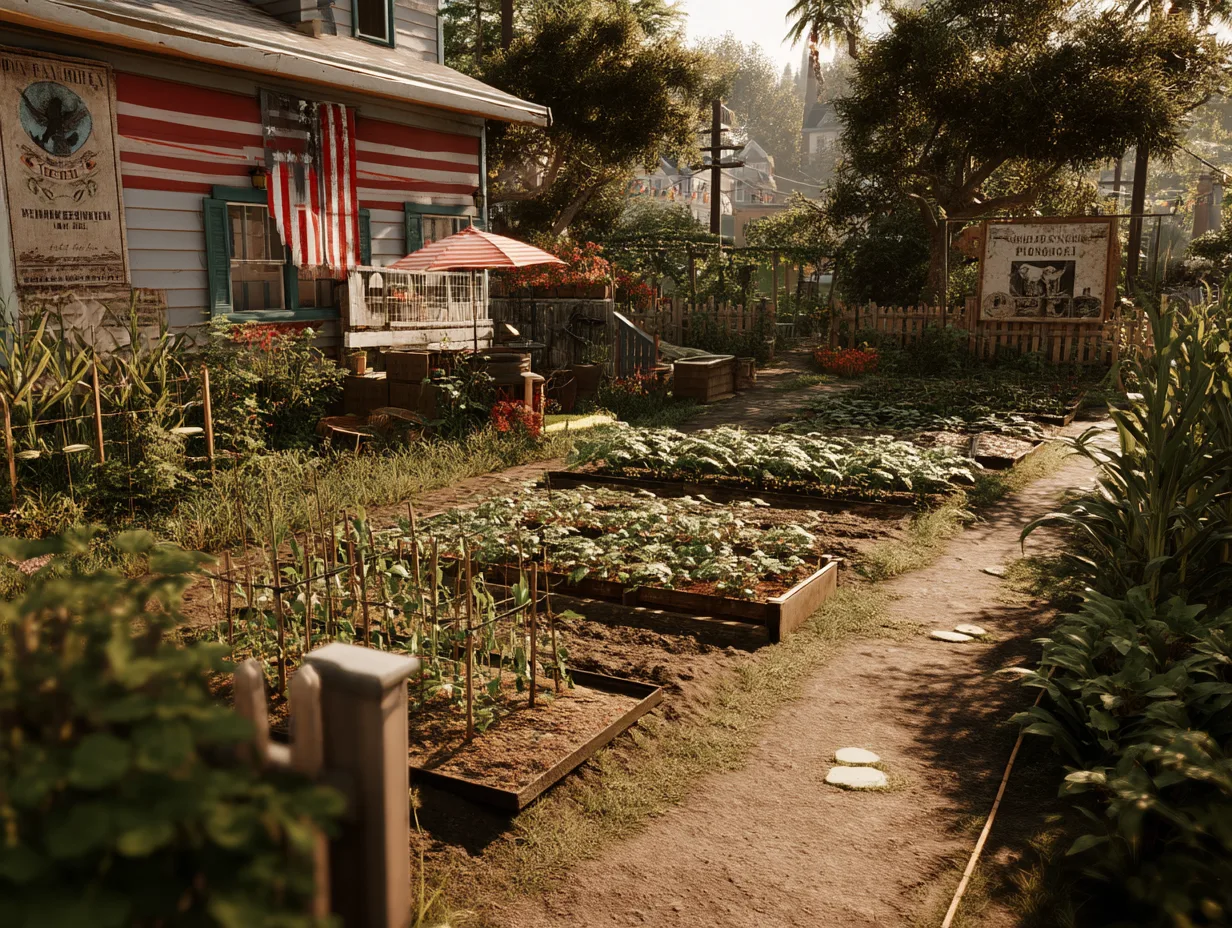Gardening is both a practical skill and a way to connect with nature. Throughout history, Victory Gardens have provided fresh food in times of need, fostering self-reliance and community spirit. Today, they remain an excellent way to save money, reduce your carbon footprint, and enjoy the satisfaction of growing your own produce. In this guide, we’ll show you how to set up a successful Victory Garden in your backyard, from planning and preparation to harvesting and storing your crops.
The History and Purpose of Victory Gardens
Victory Gardens date back to World War I and World War II, when citizens were encouraged to grow their own fruits and vegetables to support the national food supply. These gardens were often planted in backyards, public parks, and even rooftops. While the original concept was to aid in wartime, modern Victory Gardens focus on promoting self-sufficiency, reducing environmental impact, and encouraging healthier eating. By growing your own produce, you cut back on transportation costs and pesticides, and you’re also directly involved in the food production process.
For a deeper dive into sustainable gardening techniques, check out our post on Efficient Watering Techniques for Sustainable Vegetable Gardening.
Planning Your Victory Garden
Before you put a spade in the ground, it’s important to plan your garden layout and choose the right crops.
Selecting the Site
- Sunlight: Most vegetables need at least 6 to 8 hours of direct sun each day.
- Soil Quality: Opt for well-draining soil. You can conduct a simple soil test to check pH and nutrient levels.
- Water Access: Place your garden near a water source for convenient irrigation.
- Protection: Try to situate your garden away from strong winds, or use windbreaks if necessary.
Choosing Crops
Select crops that you and your family enjoy eating, and consider those that store well if you aim to preserve your harvest. Some common choices include tomatoes, peppers, beans, leafy greens, and root vegetables. For variety and pollinator support, add flowers or herbs like basil and marigolds.
If you’re new to vegetable gardening, see our comprehensive guide on Vegetable Gardening for Beginners for expert tips and step-by-step instructions.
Preparing the Soil
Healthy soil is the foundation of a thriving Victory Garden. Start by removing any weeds and debris from the chosen area. If your soil is compacted or lacking in organic matter, consider the following:
- Composting: Mix well-rotted compost or manure into the top layer of soil to enhance fertility.
- Cover Crops: Plant cover crops like clover or rye in the off-season to improve soil structure.
- Soil Amendments: Adjust the pH with lime (to raise pH) or sulfur (to lower pH) based on your soil test results. For more details on soil biology, refer to The Science of Soil.
Starting Seeds and Transplants
Growing your own seedlings can help you jump-start the gardening season. You can start seeds indoors using trays and a seedling mix. Ensure they have enough light and maintain adequate moisture levels. When the seedlings have two or more sets of true leaves, they’re ready to harden off—gradually expose them to outdoor conditions before transplanting.
If you prefer to skip the seed-starting phase, you can purchase young plants (transplants) from a local nursery. Look for healthy, disease-free specimens that will adapt quickly to your garden environment.
Planting and Layout
The key to a successful Victory Garden is using space efficiently. Consider these layout strategies:
- Square Foot Gardening: Divide your plot into square-foot sections, planting one type of crop per section.
- Companion Planting: Place plants together that can benefit each other, such as basil with tomatoes for better flavor and natural pest deterrence. See our article on Companion Planting in the Vegetable Garden to learn more.
- Succession Planting: Stagger your planting dates to enjoy a continual harvest rather than one overwhelming yield.
Watering and Maintenance
Consistent care will keep your Victory Garden productive all season long:
- Water Deeply: Aim for deeper, less frequent watering sessions to encourage robust root growth.
- Mulch: Use straw, grass clippings, or shredded leaves around your plants to conserve moisture and suppress weeds.
- Fertilize Appropriately: Apply organic fertilizers or compost during the growing season if your soil test indicates a nutrient deficiency.
- Pest Control: Monitor your garden for pests and diseases. Use eco-friendly methods like handpicking, natural predators, or neem oil. For more solutions, visit our guide on Eco-Friendly Pest Control.
Harvesting and Storing Your Produce
Knowing when to harvest is crucial for flavor and nutrition. Different crops have unique indicators for ripeness:
- Tomatoes: Harvest when they’re fully colored and slightly soft.
- Peppers: Pick them once they reach their desired size or color.
- Leafy Greens: Snip outer leaves as needed for a continuous supply.
- Root Vegetables: Check the diameter of the root shoulder above the soil line.
After harvesting, store your produce in cool, dark conditions to extend freshness. Certain crops like onions and potatoes can be cured and kept for weeks or months in the right environment.
Preserving the Bounty
A key aim of Victory Gardens is self-sufficiency. Consider preserving your surplus:
- Canning: Use hot water bath or pressure canning methods for fruits, vegetables, and sauces.
- Freezing: Blanch and freeze vegetables for future use.
- Drying: Dehydrate herbs, fruits, or vegetables for long-term storage.
- Fermentation: Sauerkraut, kimchi, and pickles are excellent ways to use extra produce.
With these techniques, you can enjoy the taste of summer year-round.
Scaling Up or Down
Victory Gardens are flexible. Even if you have a small yard, container gardening or raised beds can yield impressive harvests. Conversely, if you have more land, you can expand to include fruit trees, berry bushes, and more staple crops. Adjust your garden size to match your family’s needs and your ability to maintain the space.
Sustainability and Community
Victory Gardens are about more than personal benefit. By growing your own food, you reduce your carbon footprint and decrease reliance on large-scale agriculture. Sharing extra produce with neighbors or participating in community seed exchanges can strengthen local food networks.
For deeper insights into sustainable gardening, be sure to explore the wealth of information in The Year-Round Vegetable Garden for Beginners. This resource offers advanced tips, detailed planting calendars, and innovative methods to help you maximize your backyard harvest.


Leave a Reply